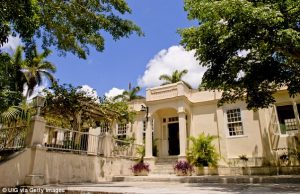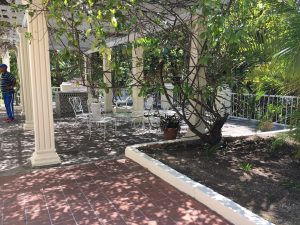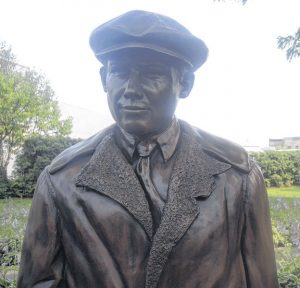Modern America’s most revered, complex and troubled novelist Ernest Hemingway – the man known as “Papa” – traveled (and took his readers) to battlefields and bars in places such as the beaches of Normandy and the canals of Venice, plus the Congo, Caribbean and China, to name a few.
Hemingway hunted German U-boats (from his fishing boat) off Key West; survived multiple plane crashes; and avoided being gored at the “Running of the Bulls,” in Pamplona, Spain before doing himself in with his favorite shotgun on an early July day near Sun Valley, Idaho.

Robert Wheeler authored “Hemingway’s Havana: A Reflection of the Writer’s Life in Cuba,” featuring rich photography, and “Hemingway’s Paris: A Writer’s City in Words and Images.”
Since the sun never sets on Hemingway’s logistical legacy, where, I asked Wheeler, does he think Hemingway’s soul is most palpable: Petoskey? Paris? Pamplona?

“I would have to say based on my travels Hemingway’s spirit can be found beautifully in Havana. I think the spirit of him as a young apprentice writer in love with Hadley is alive and well in Paris,” said Wheeler. “But in Havana you can find his spirit not only walking in the sea breeze along the Malecon, but also in the various cafes he frequented.”
Hemingway drank mojitos in Havana at the earthy La Bodeguita del Medio; and his “Papa Doble” daiquiris at the snazzy La Floridita, where a life-sized statue of him is seated at the bar. Most travelers to Havana make a pilgrimage to visit Hemingway’s former home “Finca Vigia” and its grounds, which has been restored by Lansing-based Christman Company.

“You can especially feel Hemingway’s presence through the voices of the people there who knew him or knew of him. He left them with beautiful memories and with tears,” said Wheeler, who researched the book by traveling to Cuba via Toronto.
“I’ve never flown to Cuba on a flight from the United States, but there are certain ways you can,” Wheeler explained. (Canadians, by contrast to U.S. citizens, can fly freely to Havana due to the absence of a trade embargo.) “Americans have to provide a reason why they are traveling there. It’s very easy, though, to say, for instance, that you’re writing an article for your local newspaper. Then you maintain a record of that and keep your receipts and have an itinerary you can show if need be.”

Wheeler’s first Hemingway read was “The Garden of Eden,” which was published posthumously in 1986.
“From the second I opened that book I was hooked,” he said. “It was a foreign land; it was a man and woman on an extended honeymoon in Mediterranean France. After that I went on to read Hemingway’s Nick Adams series, so, in a sense, I went from France right over to Michigan.”
Hemingway set the Nick Adams stories in Northern Michigan towns such as Horton Bay and Mancelona where he grew up summering on Walloon Lake. A life-sized statue of young Ernest Hemingway was unveiled in the center of Petoskey in summer of 2017.

Could another Wheeler book featuring Hemingway’s roots in Northern Michigan be in the works?
ContactTravel Writer Michael Patrick Shiels at MShiels@aol.com His radio program may be heard weekday mornings on 92.1 FM. His latest book is “I Call Him Mr. President – Stories of Fishing, Golf and Life with my Friend George H.W. Bush”
Thank you, Michael Patrick Sheils for this article as well as Robert Wheeler for his book on Hemingway and Cuba. Best, Christine
